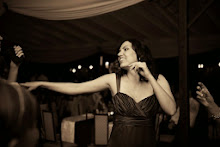Today I am going to share quite an old post with you - old it may be, but it is still relevant, and still funny. It is by Paul Hierbert on Flavorwire. Here is an excerpt:
Against Promotional Author Photographs
Excellent authors avoid writing cliches. The problem is that some of these very authors do not apply the same level of vigilance when it comes to taking promotional photographs, whether they’re for magazine profiles or back-of-the-book biographies. In an attempt to look uniquely profound yet accessible, or convey some novel combination of deep thoughts with good times, a lot of writers end up looking exactly the same as their peers. It doesn’t matter if the authors are well-established or just scheduling their first panel discussion — all are susceptible to producing hackneyed images.
Since we don’t expect authors to be virtuosos in every medium, we thought we’d take a critical look at five categories of promotional-author photography as a warning for all future writers who want to break out of the formula.
1. The Sophisticated Photograph (aka “The My-head-is-so-weighted-down-by-great-thoughts-it-requires-additional-support”)
It’s the two-fingered peace sign of tourists. The “say cheese” of extended-family portraits. The pouty lips of Facebook users. The middle finger of punk rockers. Putting your fist under your chin does not come naturally to most people, but given the pose’s ubiquity amongst authors, it must be innate to those within the profession.
 |
| John Updike |
2. The Office Photograph (aka “The Oh-I-didn’t-hear-you-enter-please-come-in-it’s-really-no-problem”)
Everyone likes seeing how art is made behind the scenes. This particular brand of promotional photograph provides the viewer with that indulgence. As you can see, some artists prefer the ascetic workplace, while others take the more cluttered approach. The overall concept, however, is usually not that revelatory nor interesting.
 |
| Malcolm Gladwell |
3. The Comfortable Photograph (aka “The Torso-twist-with-arm-resting-on-back-of-couch”)
It’s important to writers that readers understand they are just like them, and that they, too, enjoy the pleasures derived from sitting on a couch. Who wouldn’t trust someone who likes a good couch sitting now and then? This strategy may have worked in the 19th century, but modern readers are more than aware that an author’s ethical discernment and creative prowess have little to do with an author’s attitude toward a piece of furniture capable of accommodating three to four people.
 |
| J.K Rowling |
4. The Smoker Photograph (aka “The You-can’t-be-bad-ass-by-doing-what’s-good-for-you-and-your-children”)
Only rebels smoke, and only rebels have the courage to say what needs to be said in an oppressive society. So the writers who opt for The Smoker Photograph hope you believe. But if all writers are rebels, isn’t that a new kind of conformity? The paradigm has shifted.
 |
| Hunter S. Thompson |
5. The Hand-To-Face Photograph (aka “The Face-alone-is-boring-and-therefore-not-enough”)
A distant cousin to The Sophisticated Photograph, The Hand-To-Face Photograph is employed by authors who require that their entrees be accompanied with garnish. Their intent seems to be clear: a subtle flourish with the hand will set me apart from the rest. But as the record shows, this type of photograph only reinforces them as authors, and sets them apart from accountants, cashiers, marine biologists, and others who would never pose like this.
 |
| Oscar Wilde |

No comments:
Post a Comment